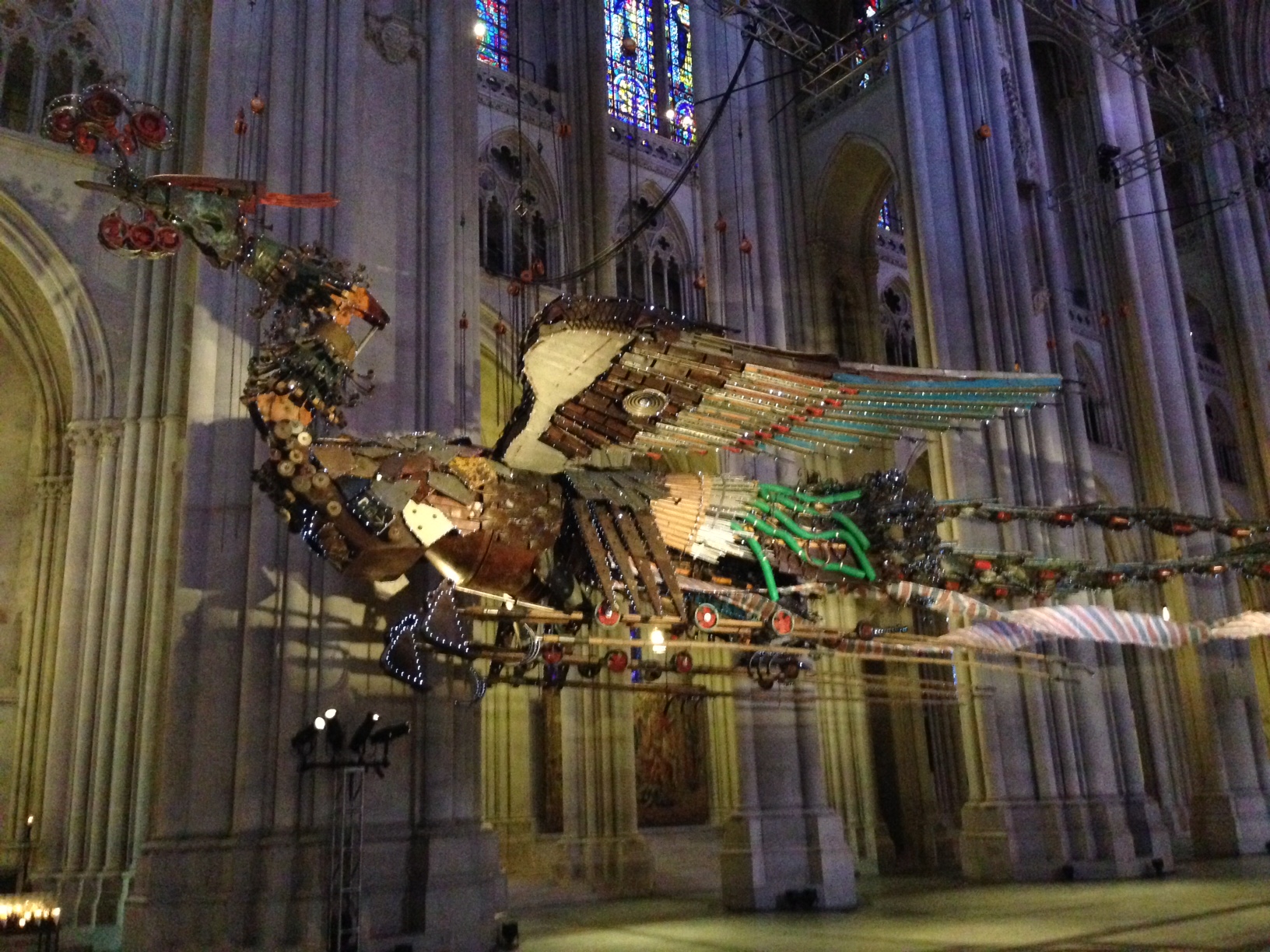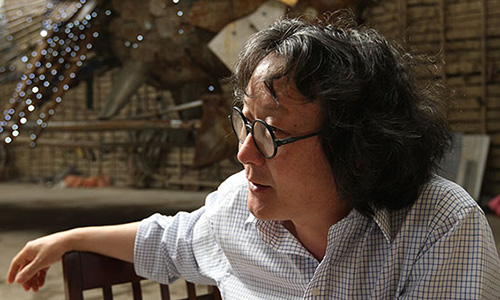Anthony Japour, Happener based in Miami, had the opportunity to speak to Xu Bing about the other techniques and mediums important to his work, and what we can expect from him next.

Cathédrale Saint-Jean le Divin — New York — Xu Bing, Phoenix (2008-2010) — Photo : Chadd Kortge
Why is calligraphy so important in the art history of China?
In China, calligraphy plays one of the most representative and central roles in its realm of culture. As a visual medium, it definitely plays a critical role in the development of art history.
Your artistic practice includes many woodcut prints. Why do you select this medium?
The selection of this medium was a passive choice. When I was studying at the Central Academy of Fine Arts, I majored in printmaking. However, due to the lack of advanced printmaking facilities to make lithographs, bronze etchings or silk screens, etc., in China at that time, woodcut printing was the most basic printing tool that was readily available. Hence, this medium became one of the main tools of expression in my art.
In China, woodcut printing is also considered as a more traditional form of art making, having dated back to the ancient times. However, that kind of reproductive printmaking is different to our creative printmaking.
In China, woodcut printing is also considered as a more traditional form of art making, having dated back to the ancient times. However, that kind of reproductive printmaking is different to our creative printmaking.
The color palette of your paintings and work on paper is largely monotones of white, black and beige yet your large installation at Mass MoCA is very colorful. Do you think you will experiment with color in your painting or works on paper?
I don't think that’s how I think in terms of my art making. Basically, when creating my works, I don't use colors very often, and this may have to do with the influence of traditional Chinese art making.
The Chinese like to say, “Mighty voices rarely sound; Great vision has no set design” (Dao De Jing Stanza 41 trans. Moss Roberts) and in Chinese painting there is also a term that literally translates into “the five colored separation of black ink”. It refers to the manipulation of ink by diluting it with different quantities of water to create different tones that are like five colors. This is the “less is more” attitude in Chinese philosophy that I follow. I feel that monotones form the foundation of the works, while colors are accessories that are dependent on subjective interpretation. Therefore, it is the fundamentals that matter more to me.
The Chinese like to say, “Mighty voices rarely sound; Great vision has no set design” (Dao De Jing Stanza 41 trans. Moss Roberts) and in Chinese painting there is also a term that literally translates into “the five colored separation of black ink”. It refers to the manipulation of ink by diluting it with different quantities of water to create different tones that are like five colors. This is the “less is more” attitude in Chinese philosophy that I follow. I feel that monotones form the foundation of the works, while colors are accessories that are dependent on subjective interpretation. Therefore, it is the fundamentals that matter more to me.

Your Square Word Calligraphy using the poetry of famous poets is very interesting. Which poets’ works from Western sources have you included?
Some of the works I’ve included are the ones of Emily Dickinson, Robert Frost, Walter Whitman, Bob Dylan etc. I’m not an expert at western poetry, or well versed in western literature, but the works of the authors I’ve included are all people that I admire greatly.
What is HAPPENING Next?
I am currently exhibiting at LACMA, SCAD Museum of Art in Savannah and the Patricia & Phillip Frost Art Museum, Miami. I will then be holding gallery shows in Europe and Canada in November.
More info on Xu Bing’s latest work can be found at xubing.com // xubing.wordpress.com and on instagram @xubingart
More info on Xu Bing’s latest work can be found at xubing.com // xubing.wordpress.com and on instagram @xubingart









